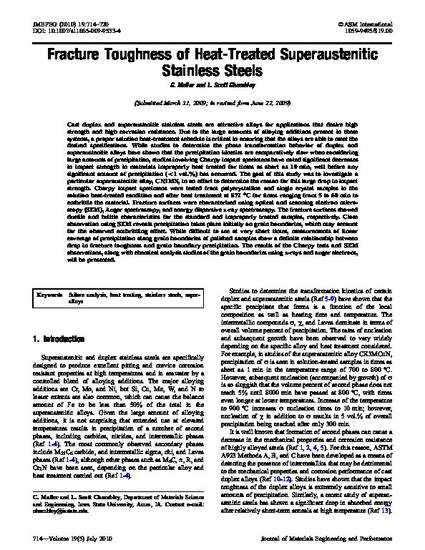
Cast duplex and superaustenitic stainless steels are attractive alloys for applications that desire high strength and high corrosion resistance. Due to the large amounts of alloying additions present in these systems, a proper solution heat-treatment schedule is critical in ensuring that the alloys are able to meet the desired specifications. While studies to determine the phase transformation behavior of duplex and superaustenitic alloys have shown that the precipitation kinetics are comparatively slow when considering large amounts of precipitation, studies involving Charpy impact specimens have noted significant decreases in impact strength in materials improperly heat treated for times as short as 10 min, well before any significant amount of precipitation (<1 >vol.%) has occurred. The goal of this study was to investigate a particular superaustenitic alloy, CN3MN, in an effort to determine the reason for this large drop in impact strength. Charpy impact specimens were tested from polycrystalline and single crystal samples in the solution heat-treated condition and after heat treatment at 872 °C for times ranging from 5 to 60 min to embrittle the material. Fracture surfaces were characterized using optical and scanning electron microscopy (SEM), Auger spectroscopy, and energy dispersive x-ray spectroscopy. The fracture surfaces showed ductile and brittle characteristics for the standard and improperly treated samples, respectively. Close observation using SEM reveals precipitation takes place initially on grain boundaries, which may account for the observed embrittling effect. While difficult to see at very short times, measurements of linear coverage of precipitation along grain boundaries of polished samples show a definite relationship between drop in fracture toughness and grain boundary precipitation. The results of the Charpy tests and SEM observations, along with chemical analysis studies of the grain boundaries using x-rays and auger electrons, will be presented.
Available at: http://works.bepress.com/l_chumbley/41/

This article is from Journal of Materials Engineering and Performance 19 (2010): 714-720, doi: 10.1007/s11665-009-9533-4. Posted with permission.